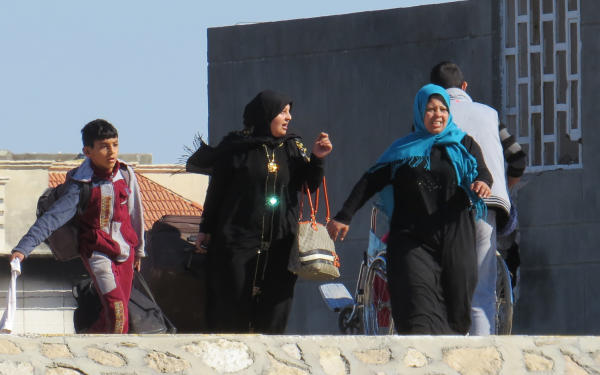RAMADI – Snipers from Iraq’s elite counter-terrorism unit lie on their bellies on a rooftop in eastern Ramadi. They scan the palm groves 300 metres away for signs of movement but find none.
Moments earlier, a 2000-pound bomb dropped by a U.S.-led coalition plane hit a vehicle on the other side of the four-lane road forming the latest frontline in Iraq’s battle against ISIS.
This is the way much of the fighting is being conducted in the capital of western Anbar province, which the militants seized in May and the Iraqi military retook last month following a six-month siege.
Baghdad and Washington have touted Ramadi as the first major success for Iraq’s U.S.-backed army since it collapsed in the face of ISIS lightning advance across the country’s north and west in mid-2014.
But the scorched-earth battlefield tactics used by both sides mean the prize is a shattered ruin.
Iraqi officials and the coalition say hundreds of air strikes launched on the city since July played a decisive role in recapturing it. More than three weeks after the Iraqis declared victory in the biggest population centre reclaimed from ISIS, aerial bombardment can still be heard every few minutes.
After an initial thud, a dark column of smoke rising into the clear blue sky is the only sign of the bombing. A crackled voice over a commander’s walkie-talkie reports: “eight terrorists killed”.
They were preparing to launch a car bomb, or “vehicle-borne improvised explosive device”, the Iraqi commander says in fluent English, using the U.S. military’s acronym: “VBIED.” There was a machine gun mounted on the bed of their pickup truck, another officer offers later.
Before ISIS took over, these farmlands were a stronghold of its predecessor al Qaeda, which U.S. forces – and later Iraqis – fought for years to recapture.
The area “by nature of its geography offers the terrorists fertile environment for using car bombs and avoiding air strikes,” the commander says.
Occasional gunshots ring out. They belong to other snipers from the army and counter-terrorism forces positioned closer to the strike location.
Direct combat in Ramadi has been the near exclusive domain of a few hundred counter-terrorism forces, an elite unit established by the United States after the 2003 invasion, which reports directly to the prime minister.
A few army divisions, a handful of police units and some irregular fighters support the campaign and help hold land.
Evidence of this strategy is everywhere in Ramadi.

